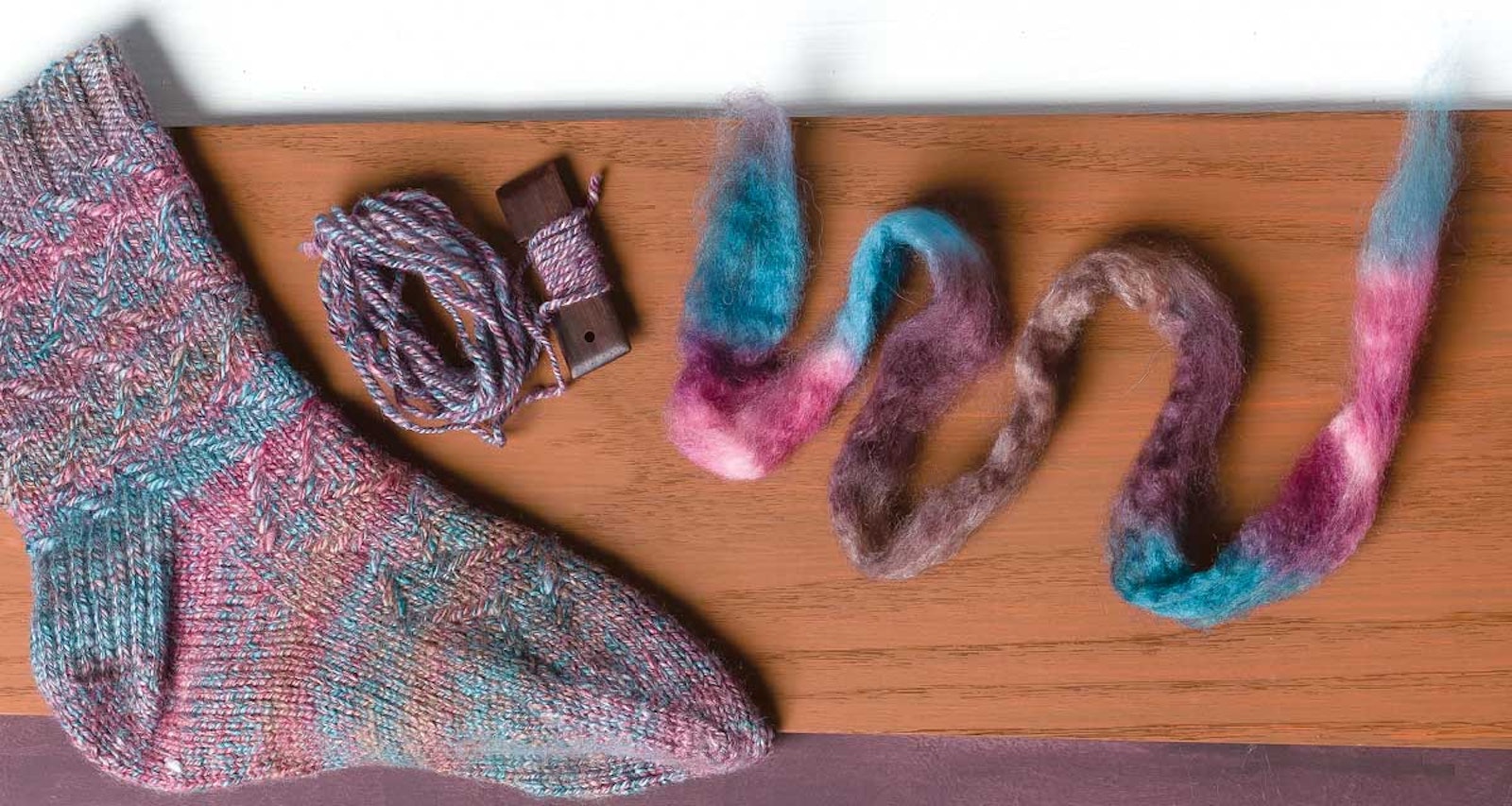Making Handspun Socks Last
Spinners and knitters have developed clever ways to make a durable handspun sock that holds up to wear even better than machine-made socks or handknitted socks from commercial yarn. Anna Zilboorg’s free-sole sock method calls for knitting the sole and instep separately, which has 2 advantages: You can use a durable yarn for the sole and a softer yarn for the more sensitive areas of your feet, and you can take off the worn sole and knit a new one when needed.
In an article in Sockupied Fall 2014, sock-knitting genius Kate Atherley offered the following advice on durability that applies double for handspun socks:
Yarn Choice
Many knitters make a conscious choice to avoid man-made fibers. I respect that, and will do that for many types of projects. But I welcome a bit of man-made technology in my socks. I like a sock yarn with 10–25% nylon blended in with the wool—the nylon makes the wool significantly more durable.
In addition, I make a deliberate choice not to use the softest yarns. The softer the yarn, in general, the faster it will wear out. What feels soft to your hands will break your heart if you put it on your feet. For the majority of people, our feet simply are not as sensitive as our hands, so a good sock yarn doesn’t need to—indeed, shouldn’t—feel really good to the hands. Choose a sock yarn that feels woolly and firm. Avoid yarns that are squishy or lofty. Choose a yarn with multiple plies—that is, a yarn composed of multiple finer strands spun together. And make sure it’s spun very tightly. (Save the soft and drapey sock yarns for lace projects.) As an added bonus, a tightly spun, multi-ply yarn is less likely to pill and look worn over time.
Some sock yarns create softness by blending in fibers like cashmere, silk, or alpaca with wool. On their own these aren’t strong enough for socks, but are wonderful when part of a multi-ply, tightly spun yarn.
The Sad Widowed Sock
But what of the sock that we celebrate every May 9th on Lost Sock Memorial Day? (Which is totally a thing; look it up for yourself…) Here’s my theory:
- Mismatched socks are a fashion statement.
- If you lose one sock each from two pairs, you have a new pair of mismatched socks.
- Ergo, you can only ever have one truly lost sock. When you have two lost socks, you have a new mismatched pair.
For that matter, why even bother knitting socks in pairs? Never mind Second Sock Syndrome; just cast on a handspun sock and cover your feet one at a time.

